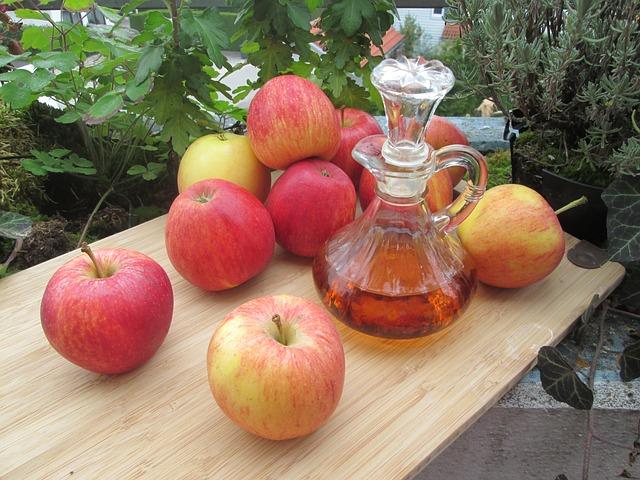Apple scrap vinegar is a great way to get multiple uses out of your apples each fall. If you’re planning on canning applesauce or pressing your own cider, chances are you’ll have a lot of surplus apple material around that can be used to make apple scrap vinegar at virtually no cost.
Once the apples have gone through the press, the leavings may seem fibrous and dry, but there’s still a lot of sugar and apple flavor left to be extracted. Of course, you could just compost your scraps, but why not get one more use out of them?
Whether you’re practicing skills and planning for a time when every last calorie may count to save your life, or you just live a practical and frugal existence today, minimizing waste while producing useful and healthy cider vinegar seems like an obvious choice. It’s easy!
What to Do
For a small test batch, fill a quart jar with the peels and cores from 5-6 apples. That’s roughly the amount of apple you’ll need to make a pie, so now you have an excuse to practice your pie-making skills, as well.
Cover them with water, adding 1 tablespoon of sugar for each cup of water added. That converts to 1/4 cup of sugar per quart, or 1 cup per gallon for larger quantities. The sugar is necessary because while there is still plenty of sugar remaining in the pulp and peels, it’s not quite enough to get the vinegar going before the scraps spoil in other ways (mold, etc.). Once the vinegar culture gets working, the acidity will rise and they’ll no longer be a risk of contamination, but in the beginning stages, they need that extra sugar hit to get a head-start on the competition. Feel free to use alternative natural sweeteners such as brown sugar, honey or maple for more flavor in your final product, but keep in mind that those sugars are a bit more complex and your vinegar may take more time to mature.
Discover More Than 1,000 Off-Grid-Living Tricks!
Once the sugar water has been added, cover lightly with a towel or cloth napkin, and secure the cover with a canning lid band or rubber band. Fruit flies love vinegar, and they’ll find it quickly if left uncovered. Vinegar need oxygen to develop, so a porous cloth covering rather than a solid lid is essential.
Making vinegar doesn’t require a culture, because there’s enough wild yeast and bacteria in the air and on the fruit scraps to accomplish the job. The wild yeast will first convert the apples and sugar into alcohol, and since the top is left exposed to air (rather than sealed with a water lock as in home brewing), the bacteria responsible for vinegar formation will take over and rapidly metabolize the alcohol to convert it into vinegar.
Place the jar at room temperature, out of natural sunlight. After 2-3 weeks, test your vinegar by giving it a taste. If necessary, allow another 1-3 weeks for the vinegar to strengthen. Once it’s as strong as you’d like it, filter out the fruit and bottle up the vinegar to store indefinitely at room temperature.
Once you’ve got the process down after your test batch, large batches are only a matter of scaling up. Planning to can 100 jars of applesauce or press a whole tree’s worth of cider? Consider making your vinegar in a clean trash barrel, plastic tote, food-safe 55-gallon drum or old bathtub. Just be sure that the top is completely covered by a cloth, held down around the edges with cordage, bungee cords or something similar to keep out the fruit flies.
How Much Can You Make?
A single semi-dwarf apple tree produces 6-10 bushels of fruit per year. That amounts to roughly 10-15 five-gallon buckets full of fresh fruit per year. Juice-to-pulp ratios for cider and flesh-to-core/skin ratios for applesauce vary based on the type of apple, but when pressing cider, a home press should be able to make 2-3 gallons per bushel, or 12-30 gallons of cider per tree. In my experience, each bushel should give you 2-3 gallons of pulp, as well. Each gallon of pulp will yield about half a gallon of cider vinegar, meaning that a single semi-dwarf tree in your backyard can yield as much as 15 gallons of cider vinegar in a single season.
What advice would you add? Share it in the section below:
Harness The Power Of Nature’s Most Remarkable Healer: Vinegar
 Off The Grid News Better Ideas For Off The Grid Living
Off The Grid News Better Ideas For Off The Grid Living





